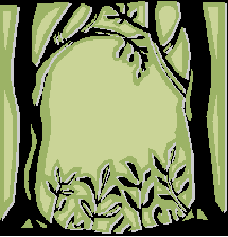



Landscape surrogates are easily measurable quantities of a landscape which are used to represent target responses (such as presence/absence of a particular species), which may be harder to measure.
The researchers examined the colinearity of the individual landscape surrogates
and also the correlation between surrogates and direct evidence of the target
responses for case studies in two different locations in which fragmentation
of habitat had occurred. They identify fragmentation as a possible cause
of loss of biodiversity.
In the first case study, wilderness quality was measured by:
Researchers found a strong colinearity among the surrogates, but no
significant relationship between these surrogates and the target response,
in this case presence and abundance of arboreal marsupials.
In the second study, the surrogates were:
There was little colinearity among the surrogates, and they were compared
to the target response by contrast of specific sets of surrogates. In this
case there were significant relationships between the contrast of surrogates
and measure of the direct response. However, the relationships were different
for different faunal species, indicating that not all species respond identically
to changes in habitat and fragmentation.
Using landscape surrogates is an important tool, because direct measurements
of target responses are not always as feasible. However, as indicated by
the first case study, not all surrogates are effective measures of their
target responses. The authors presented a framework for evaluating possible
surrogates:
Thus, the surrogates should be as close as possible to the actual target response. In addition, surrogates that have high colinearity should be avoided, because they just present the same information in slightly different form. Not all surrogates or sets of surrogates apply to every species. So if the flora group chooses to monitor amazonian flora by certain indicator species, we should make certain that the surrogates we use for a species are actually good indicators for that species, and we might also want to choose species which are applicable to different surrogates as to provide a broader base for study.
|
Home
|
Index
|
Preservation
|
|
Goals
|
Characterization |
Time plan |
|
FAQ's |
Monitoring |
Members |
|
Presentation |
Minutes |
Introduction
|